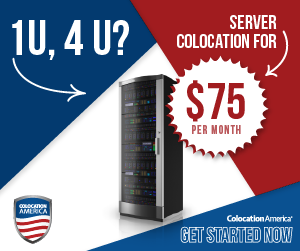Solved "Snapshots" on win10 laptops?
-
Is there something in Windows 10 Pro that I can use on a physical laptop that works like a snapshot on VMs?
I want to be able to take a snapshot and then install things and then being able to roll back everything to the exact same place.
It doesn't have to be a "backup" in the sense of being able to replace a defective SSD or similar. Just something similar to a snapshot on VMs.
- I know there is system restore points but it only restores the system and not all applications and files - or am I wrong?
- I know there is file history as well but that wouldn't work because I want a system wide roll-back av everything.
-
1 1337 marked this topic as a question on
-
I found out that you can work with volume shadow copies directly with the
diskshadowutility. Unfortunately it doesn't come with Windows 10, only the server editions.But there seems to be a
vshadowutility in the Windows SDK that has similar funtionality. I will try that.There is also a
vssadminutility in Windows 10 but you can't create snapshots with it.Then there is the
wbadminutility for backups that is available in Windows 10 as well. But it looks like it has the same restrictions as the GUI version.Microsoft just makes life complicated. If it were linux any utilities needed would be immediately at my fingertips and without being bundled with
spywareuser metrics collection. Oh well. -
Or do I need to use 3rd party solutions for backup and imaging?
- Veeam Backup & Replication CE?
- Cloudzilla Live?
-
@Pete-S said in "Snapshots" on win10 laptops?:
I want to be able to take a snapshot and then install things and then being able to roll back everything to the exact same place.
Windows Backup and Restore does this via the Volume Shadow Service (VSS). They call it a backup, but if the target is local, it's just a snapshot.
-
@Pete-S said in "Snapshots" on win10 laptops?:
Or do I need to use 3rd party solutions for backup and imaging?
- Veeam Backup & Replication CE?
- Cloudzilla Live?
Veeam Endpoint Protection is free if you go 3rd party.
-
@scottalanmiller said in "Snapshots" on win10 laptops?:
@Pete-S said in "Snapshots" on win10 laptops?:
I want to be able to take a snapshot and then install things and then being able to roll back everything to the exact same place.
Windows Backup and Restore does this via the Volume Shadow Service (VSS). They call it a backup, but if the target is local, it's just a snapshot.
Windows Backup and Restore doesn't seem to allow a local target. I'm on 21H2.

-
They are called Restore Points on windows 10.
Make a restore point, play around, the revert.

-
@JasGot said in "Snapshots" on win10 laptops?:
They are called Restore Points on windows 10.
Make a restore point, play around, the revert.

these are not the same as snaps in a VM - many things aren't reverted in restore points.
-
@Pete-S said in "Snapshots" on win10 laptops?:
@scottalanmiller said in "Snapshots" on win10 laptops?:
@Pete-S said in "Snapshots" on win10 laptops?:
I want to be able to take a snapshot and then install things and then being able to roll back everything to the exact same place.
Windows Backup and Restore does this via the Volume Shadow Service (VSS). They call it a backup, but if the target is local, it's just a snapshot.
Windows Backup and Restore doesn't seem to allow a local target. I'm on 21H2.

While I suppose I could see a use of this - I wouldn't expect to be able to "backup" to the same disk you're backing up.
If you had a second physical disk, or even a second partition large enough to hold the contents of the backed up one - that should work for you.
Unlike VM backups - Windows generally doesn't have the ability to stop using the "disk file" and create a new one for changes, then allowing you to discard the extra disk, thereby reverting to the original. That's the process that makes snaps so good.
-
Am I imagining things or did Windows licensing at one point allow for use of a virtual environment on top of the physical install? If this is (still?) the case, would a W10 install in vbox do the trick?
-
@Dashrender said in "Snapshots" on win10 laptops?:
Unlike VM backups - Windows generally doesn't have the ability to stop using the "disk file" and create a new one for changes, then allowing you to discard the extra disk, thereby reverting to the original. That's the process that makes snaps so good.
I think it actually does have that ability. That is what volume shadow copy (VSS) does.
I think both system restore points and backups uses it behind the scenes.
-
@notverypunny said in "Snapshots" on win10 laptops?:
Am I imagining things or did Windows licensing at one point allow for use of a virtual environment on top of the physical install? If this is (still?) the case, would a W10 install in vbox do the trick?
Running inside a VM regardless of tech would get the job done, but it's not what I'm looking for in this case.
I want to maximize system resources (RAM & CPU & GPU) and also have the OS on bare metal for suspend and energy saving as it's a laptop.
-
@Pete-S said in "Snapshots" on win10 laptops?:
@Dashrender said in "Snapshots" on win10 laptops?:
Unlike VM backups - Windows generally doesn't have the ability to stop using the "disk file" and create a new one for changes, then allowing you to discard the extra disk, thereby reverting to the original. That's the process that makes snaps so good.
I think it actually does have that ability. That is what volume shadow copy (VSS) does.
I think both system restore points and backups uses it behind the scenes.
That's exactly how it works
 VSS is just a "normal" snapshot service.
VSS is just a "normal" snapshot service. -
@Pete-S said in "Snapshots" on win10 laptops?:
@notverypunny said in "Snapshots" on win10 laptops?:
Am I imagining things or did Windows licensing at one point allow for use of a virtual environment on top of the physical install? If this is (still?) the case, would a W10 install in vbox do the trick?
Running inside a VM regardless of tech would get the job done, but it's not what I'm looking for in this case.
I want to maximize system resources (RAM & CPU & GPU) and also have the OS on bare metal for suspend and energy saving as it's a laptop.
It's not really "running inside a VM that does it", it's just that the use of an LVM layer (LVMs are what make snapshots possible) is assumed with virtualization whether it is LVM2, Storage Spaces, ZFS or Qcow2 files. If you run VMs on bare raw storage without the LVM layer (that's how we used to do it long ago) it lacks the snapshot capability. It's just that so many people lack an LVM on bare metal installs and essentially no one lacks them on hypervisor installs that they get associated that way.
-
@Dashrender said in "Snapshots" on win10 laptops?:
While I suppose I could see a use of this - I wouldn't expect to be able to "backup" to the same disk you're backing up.
The use case is snapshots, primarily.
-
@Dashrender said in "Snapshots" on win10 laptops?:
If you had a second physical disk, or even a second partition large enough to hold the contents of the backed up one - that should work for you.
That's better if his goal is actual backups with that additional layer of protection. Presumably he has that through some other means, he's only in need of the local, rapid rollback.
A local snapshot uses a fraction of the space, potentially, and can move the data way faster.
-
@scottalanmiller said in "Snapshots" on win10 laptops?:
It's not really "running inside a VM that does it", it's just that the use of an LVM layer (LVMs are what make snapshots possible) is assumed with virtualization whether it is LVM2, Storage Spaces, ZFS or Qcow2 files.
Of course. But from a practical point of view, running it in a VM "solves" the problem by giving you the ability to make snapshots.
-
@scottalanmiller said in "Snapshots" on win10 laptops?:
A local snapshot uses a fraction of the space, potentially, and can move the data way faster.
Yes, exactly!
A full image backup that needs to be copied to another disk needs about 40GB on a fresh Win10 install. From that point it just grows and grows.
-
I found out that you can work with volume shadow copies directly with the
diskshadowutility. Unfortunately it doesn't come with Windows 10, only the server editions.But there seems to be a
vshadowutility in the Windows SDK that has similar funtionality. I will try that.There is also a
vssadminutility in Windows 10 but you can't create snapshots with it.Then there is the
wbadminutility for backups that is available in Windows 10 as well. But it looks like it has the same restrictions as the GUI version.Microsoft just makes life complicated. If it were linux any utilities needed would be immediately at my fingertips and without being bundled with
spywareuser metrics collection. Oh well. -
@Pete-S said in "Snapshots" on win10 laptops?:
Microsoft just makes life complicated. If it were linux any utilities needed would be immediately at my fingertips and without being bundled with spyware user metrics collection. Oh well.
No kidding. LVM tools, dd, ZFS tools... so many standard ways to handle this.
-
With Windows you could move your storage to a SAN and snap the SAN















